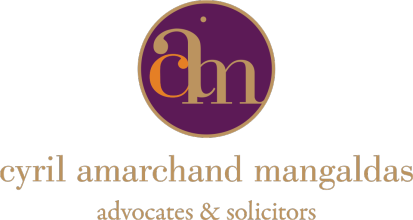The Insolvency and Bankruptcy Code (Amendment) Bill, 2025 (“Bill”), introduced in the Lok Sabha on August 12, 2025, represents a significant legislative response to India’s evolving insolvency jurisprudence by codifying key judicial pronouncements and introducing global best practices. This two part blog elaborates upon the Bill that recommends comprehensive reform addressing critical ambiguities and operational challenges that have emerged through landmark judicial decisions, whilst strengthening India’s position as a jurisdiction conducive to business revival and creditor protection. Understanding the Bill is essential for insolvency practitioners, creditors, and corporate stakeholders to navigate the enhanced framework for value maximisation and timely resolution of corporate distress.
Introduction
The Bill proposes significant amendments to the Insolvency and Bankruptcy Code, 2016 (“Code”). This aims to streamline the corporate insolvency resolution process (“CIRP”) and reinforce the value maximisation principle. Currently sent to a Select Committee of the Parliament of India for detailed examination, the Bill will be tabled in the Parliament of India for approval post the publication of the committee’s report.
Since the Code’s introduction in 2016, various judicial and quasi-judicial fora have clarified ambiguities in the interpretation and operation of its provisions through their rulings. This Bill is an opportunity to incorporate and codify the rationale laid down/upheld in these judgments, as it introduces new concepts aligned with global best practices, such as Group Insolvency, Creditor-Initiated Insolvency Resolution Process (“CIIRP”), with an out-of-court initiation mechanism for genuine business failures. It also tweaks certain existing concepts to address operational challenges.
Vidarbha Industries Power Limited v. Axis Bank Limited[1] (“Vidarbha”): – Hon’ble NCLT’s discretion to admit a company into CIRP
On July 12, 2022, the Hon’ble Supreme Court passed a judgment in Vidarbha. interpreting the nature of the Hon’ble NCLT’s power under Section 7 of the Code (“Application”), it specifically examined whether Hon’ble NCLT’s power to admit an application is mandatory or discretionary, considering Section 7(5)(a) provides that the Hon’ble NCLT “may” admit the Application if the existence of debt and default is established. The Hon’ble Supreme Court held that this language grants the Hon’ble NCLT discretion to reject an Application even on the satisfaction of the twin test – (a) occurrence of debt and default is established and the submitted Application is complete; (b) no pending disciplinary actions against the proposed Interim Resolution Professional. (“Twin Test”). If the “reasons” are provided and justified, the Hon’ble NCLT is not bound to admit the Application and has the discretion to reject it.
The Vidarbha decision initiated a conundrum in India’s insolvency regime, with various NCLTs and the Hon’ble National Company Law Appellate Tribunal (“NCLAT”) adopting contrary views on NCLT’s discretion to reject such Applications. For instance, in Bank of Maharashtra v. Newtech Promoters & Developers Pvt. Ltd.,[2] the NCLT rejected the Application despite satisfaction of the Twin Test, citing adverse impact on the interests of homebuyers. However, in IndusInd Bank Ltd. v. Hacienda Projects Pvt. Ltd.,[3] when the corporate debtor invoked Vidarbha, submitting that it was undergoing temporary financial distress, the Hon’ble NCLT admitted the Application on November 11, 2022, noting that the corporate debtor had passed the Twin Test. To resolve this confusion, the Hon’ble Supreme Court in M. Suresh Kumar Reddy v. Canara Bank,[4] relying on Innoventive Industries Limited v. ICICI Bank,[5] reaffirmed the pre-Vidarbha position: once the existence of debt and default is established, the Hon’ble NCLT has hardly any discretion left to reject the Application.
To resolve the ambiguity arising from the Vidarbha judgment, the Bill proposes substituting the word “may” in Section 7(5)(a) of the Code with “shall”, thereby making it obligatory for the NCLT to admit the Application once it satisfies the Twin Test, without considering any extraneous factors. It further provides a 14-day timeline within which the Hon’ble NCLT must pass an order either admitting or rejecting the Application. Once the Application meets the Twin Test requirements, the Hon’ble NCLT is obligated to admit the Application without considering any extraneous factors.The Bill also introduces an explanation that the production of a record of default from an information utility is sufficient to establish “default”. Thus, this proposed amendment has reversed the Vidarbha position and given effect to the literal interpretation of the provision.
State Tax Officer v. Rainbow Papers Ltd.[6] (“Rainbow Papers”): Secured Creditor Status for Statutory Dues
In Rainbow Papers, the Hon’ble Supreme Court considered whether statutory dues owed to the government, such as Value Added Tax (“VAT”) under the Gujarat VAT Act, 2003, could be treated as secured debts under the Code. It had held that government dues backed by statutory charge constitute a “security interest” under the Code, thereby qualifying the Central/State Government as a secured creditor under Section 53(1)(b)(ii). It further held that the definition of “secured creditor” under the Code does not exclude any government or governmental authority, and thus, if a resolution plan fails to include such dues, the Hon’ble NCLT must reject it. This interpretation raised concerns, as it risked disrupting the waterfall mechanism under Section 53 and opened the flood gates of litigation, with more statutory authorities claiming the same treatment as that of a secured creditor under the Code. Such an interpretation deviated from the Code’s objective of value maximisation and contradicted the Bankruptcy Law Reforms Committee Report, 2015, which recommends prioritising unsecured creditor debts over government dues. The Hon’ble Supreme Court in Paschim Anchal Vidyut Vitran Nigam Limited vs. Raman Ispat Private Limited and Ors.,[7] opined that Rainbow Papers disregarded the intention of the legislature under the waterfall mechanism.
The present Bill proposes adding an explanation that excludes interest created merely by operation of law (such as government dues) from the definition of “security interest” under Section 3(31) of the Code. It also proposes an explanation in Section 53(1)(e)(i), clarifying that Central or State Government dues will not be entitled to the priority of a “secured creditor”. This clarificatory amendment has effectively reversed the rationale in Rainbow Papers and upheld the Code’s objective.
Glas Trust Company LLC v. Byju Raveendran and Ors.[8] (“Glas Trust”):Withdrawal of Company Petition under Section 12A
The withdrawal of CIRP applications under the Code has evolved through judicial interpretation and legislative amendments. Initially, Rule 8 of the Insolvency and Bankruptcy (Application to Adjudicating Authority) Rules, 2016 (“Rule 8”), permitted the Hon’ble NCLT to allow withdrawal of applications filed by creditors under Sections 7, 9, or 10.
However, the Code had gaps regarding post-admission withdrawals. In cases including Anuj Tejpal v. Rakesh Yadav,[9] the Hon’ble NCLAT exercised inherent powers under Rule 11 of the National Company Law Appellate Tribunal Rules, 2016, to permit such withdrawals, but courts subsequently became reluctant to invoke these inherent powers due to the existence of Rule 8. This judicial hesitancy prompted the Hon’ble Supreme Court to use its constitutional powers under Article 142 of the Constitution and permit CIRP withdrawal in Mothers Pride Dairy India Private Limited v. Portrait Advertising and Marketing Pvt. Ltd.,[10] Lokhandwala Kataria Construction (P) Ltd. v. Nisus Finance and Investment Managers LLP,[11] and Uttara Foods & Feeds (P) Ltd. v. Mona Pharmachem,[12] based on settlements between the creditors and corporate debtor.
The Insolvency Law Committee Report of March 26, 2018, emphasised that the Code discourages individual enforcement actions that exclude the collective creditor benefit. It recommended permitting withdrawal only with CoC approval by a 90 per cent voting share, ensuring settlements involved all creditors and debtors. Section 12A, introduced through the Insolvency and Bankruptcy (Second Amendment) Act, 2018, failed to address scenarios of company petition withdrawals between admission and CoC constitution. Subsequently, Regulation 30A of the Insolvency and Bankruptcy Board of India (“IBBI”) (Insolvency Resolution Process for Corporate Persons) Regulations, 2016, was introduced via the IBBI (Insolvency Resolution Process for Corporate Debtors) (Third Amendment) Regulations, 2018, which was initially silent on withdrawals both before CoC constitution and post issuance of the invitation for expression of interest (“IEOI”).
The Hon’ble Supreme Court in Brilliant Alloy Private Limited v. S Rajagopal and Ors.[13] (“Brilliant Alloy”) and Swiss Ribbons (P) Ltd. v. Union of India[14] (“Swiss Ribbons”) provided crucial clarifications on withdrawal under Section 12A of the Code. While in Brilliant Alloy it held withdrawal post-issuance of IEOI was not prohibited under Section 12A, in Swiss Ribbons it held that the Hon’ble NCLT could permit withdrawal post-admission but before CoC constitution after hearing all parties. Following these decisions, Regulation 30A was amended in 2019 to permit the withdrawal of a company petition before CoC constitution through an application made by the Interim Resolution Professional (“IRP”) and post the issuance of IEOI, provided that the applicant justified late-stage withdrawal.
On October 23, 2024, the Hon’ble Supreme Court passed the judgment in Glas Trust, which discussed the contours of Section 12A of the Code, and outlined four CIRP stages for the corporate debtor to seek petition withdrawal and the corresponding authorities:
- prior to admission – the applicant approaches the Hon’ble NCLT under Section 12A, who could allow the withdrawal since CIRP is in personam;
- post admission, pre-CoC constitution – the IRP approaches the Hon’ble NCLT under Regulation 30A, who may approve or reject the application since the CIRP is in rem;
- post CoC constitution, pre-issuance of IEOI – the IRP / resolution professional (“RP”) post CoC approval of 90 per cent voting share approaches the Hon’ble NCLT under Section 12A; and
- post CoC constitution and issuance of IEOI – the IRP/RP post CoC approval of 90 per cent voting share approaches the Hon’ble NCLT under Section 12A read with Regulation 30A but must justify late withdrawal.
The Bill proposes to amend Section 12A to prevent the withdrawal of a company petition admitted before CoC constitution or after the RP’s issuance of the first IEOI, reversing the Hon’ble Supreme Court’s decisions in Brilliant Alloy and Swiss Ribbons. This implies that Regulation 30A would require a revision to reflect the consequential changes to prohibit company petition withdrawal during these two stages. This amendment would ensure that once a corporate debtor is admitted into CIRP and the proceedings become in rem in nature, withdrawal shall not be allowed, which aligns with the Code’s objectives.
This analysis of the Bill reflects the legislative response to the evolving jurisprudential landscape by incorporating/codifying the rationale laid down/upheld in these judgments. Part II of this blog discusses the judgments of Tata Steel BSL Limited v. Venus Recruiter Private Limited and Ors, Essar Steel India Ltd. v. Satish Kumar Gupta, Arcelormittal India (P) Ltd. v. Satish Kumar Gupta, State Bank of India v. Videocon Industries Ltd., Edelweiss Asset Reconstruction Company Ltd. v. Sachet Infrastructure Pvt. Ltd. & Ors., and the codification of the decision in these judgments through the Bill.

For further information, please contact:
Sairam Subramanian, Partner, Cyril Amarchand Mangaldas
sairam.subramanian@cyrilshroff.com
[1] (2022) 8 SCC 352.
[2] 2022 SCC OnLine NCLT 326.
[3] C.P. (IB) No. 419/NCLT/ND/2022.
[4] (2023) 8 SCC 387.
[5] (2018) 1 SCC 407.
[6] (2023) 9 SCC 545.
[7] 2023 SCC OnLine SC 842.
[8] (2025) 3 SCC 625.
[9] SCC OnLine NCLT 5794.
[10] 2017 SCC OnLine SC 1789.
[11] (2018) 15 SCC 589.
[12] (2018) 15 SCC 587.
[13] (2022) 2 SCC 544.
[14] (2019) 4 SCC 17.





